|
A Photo Essay at Yesterland.com |
World Showcase at Night in 1983 | ||
|
Today is the 30th anniversary of the opening of EPCOT Center—now Epcot. I was there in January 1983, when the amazing new park was just a few months old. In today’s photo essay, please join me on an evening stroll around World Showcase Lagoon, almost 30 years ago.
|
|||
|
|
|||
|
Our evening stroll won’t go to every World Showcase country. There was no Morocco (October 1, 1984) or Norway (July 1, 1988) in 1983. And, for some reason, our cameras stayed in their bags at night at Mexico and the United Kingdom. |
|||
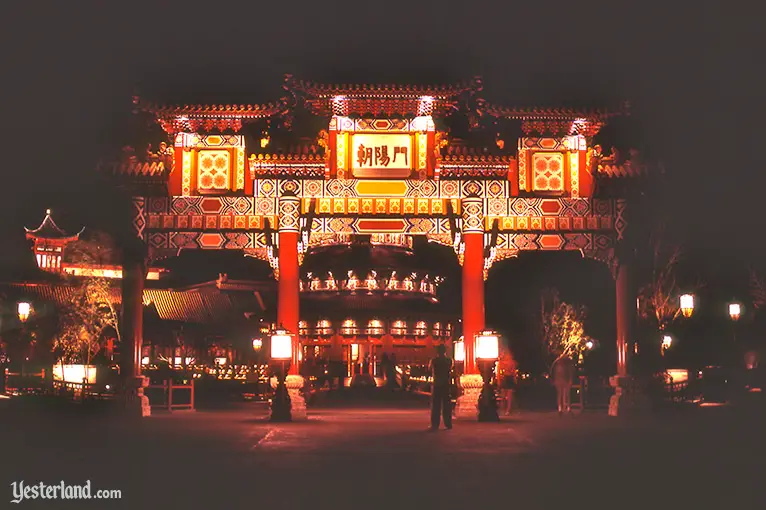
Photo by Werner Weiss and Dennis Derr, January 1983 Ceremonial arch at China Pavilion |
|||
|
Welcome to the 1983 version of China. Unlike other World Showcase countries, China had neither a restaurant nor a store when it opened. It only had spectacular Chinese architecture, gardens, and a Circle-Vision 360 movie, Wonders of China. |
|||

Photo by Werner Weiss and Dennis Derr, January 1983 CH’I NIEN TIEN (“Hall of Prayer and Good Harmony”) at China |
|||
|
Originally, one of the most breathtaking scenes of Wonders of China showed Tibet’s incredible Potala Palace, once home of the Dalai Lamas. Disney’s filmakers were the first foreigners allowed to film there. As the controversy over Chinese rule of Tibet increased, the scenes of Tibet were quietly removed (nobody seems to remember when that happened). |
|||
|
|
|||
|
By Spring 1983, the China Pavilion had an exhibit of ancient Chinese sculpture, which included actual bricks from the Great Wall of China. Finally, in October 1985—three years after the opening of EPCOT Center—China opened the table-service Nine Dragons Restaurant and the counter-service Lotus Blossom Cafe. |
|||
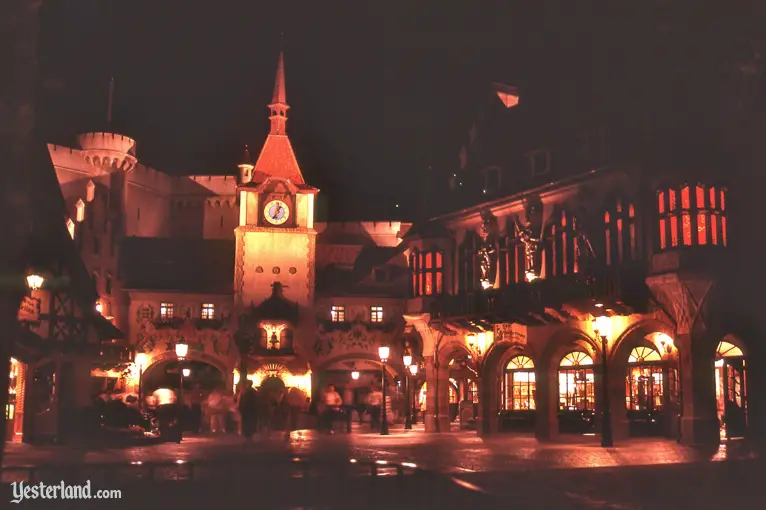
Photo by Werner Weiss and Dennis Derr, January 1983 Germany |
|||
|
When EPCOT Center opened in 1982, the real world had two Germanys—the free, capitalist Federal Republic of Germany (West Germany) and the Soviet-block, communist German Democratic Republic (East Germany). But World Showcase had a single Germany. Almost exactly eight years later, on October 3, 1990, there would also be a single, unified Germany in the real world. It’s a good reminder that World Showcase doesn’t celebrate national governments; it celebrates a country’s people, culture, architecture, art, and cuisine. |
|||
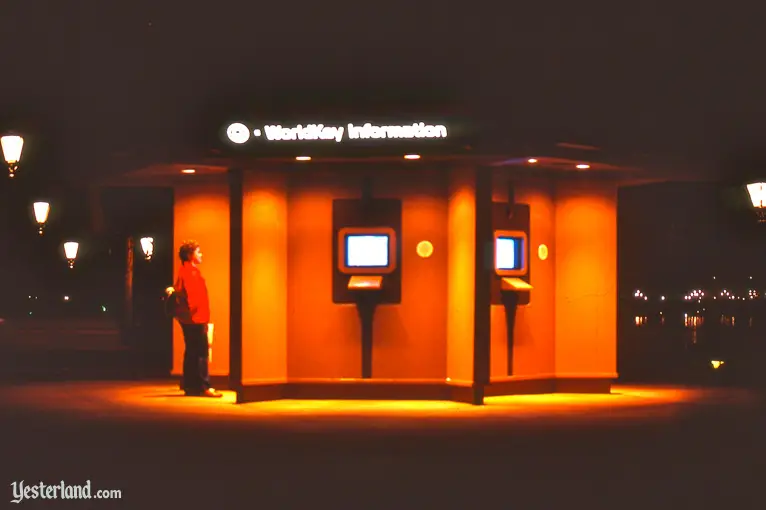
Photo by Werner Weiss and Dennis Derr, January 1983 WorldKey Information Satellite at Germany |
|||
|
As part of our stroll around World Showcase Lagoon, let’s stop for some information. Germany had one of World Showcase’s two WorldKey Information Satellites. The other was near the entrance to World Showcase. The main base for WorldKey terminals was Earth Station, behind Spaceship Earth. |
|||
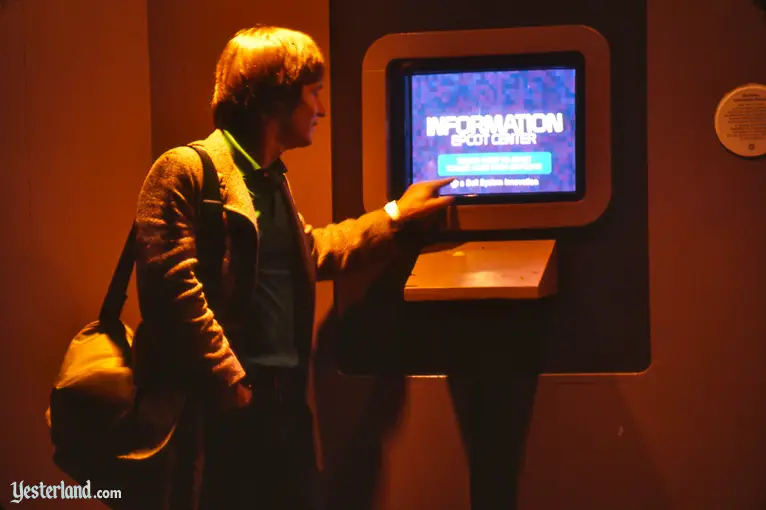
Photo by Werner Weiss and Dennis Derr, January 1983 Using a WorldKey touchscreen |
|||
|
When EPCOT Center opened, the WorldKey system was a remarkable demonstration of technology and a useful way to get answers to questions. Although the underlying technology of WorldKey was completely different from today’s Internet, the user experience predicted the type of interactive functions that we take for granted today. WorldKey was intuitive for users at a time when personal computers were a rarity and the first web browsers were more than a decade away. And unlike the early Web, WorldKey had sound, videos, live videophone calls, animated transitions, and transaction functionality—even to make restaurant reservations. |
|||
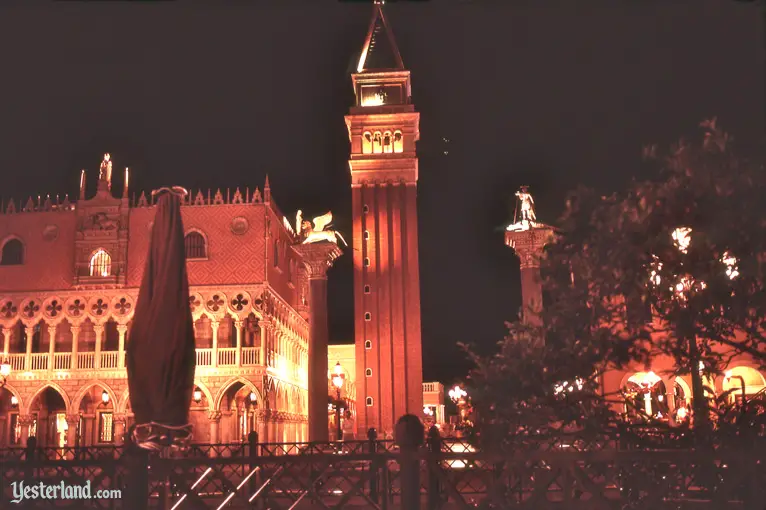
Photo by Werner Weiss and Dennis Derr, January 1983 Italy |
|||
|
Continuing our nighttime stroll, we’re now at Italy in 1983. Reduced-size versions of Venice’s world famous Palazzo Ducale (Doge’s Palace) and Campanile di San Marco (bell tower of St. Mark’s) dominate the scene, although there are references to other parts of Italy too. Italy had no ride or theater show (and still doesn’t today), but it had a very well-known tenant, L’ Originale Alfredo di Roma Ristorante—usually just called Alfredo’s—the restaurant that gave the world fettuccine Alfredo. |
|||
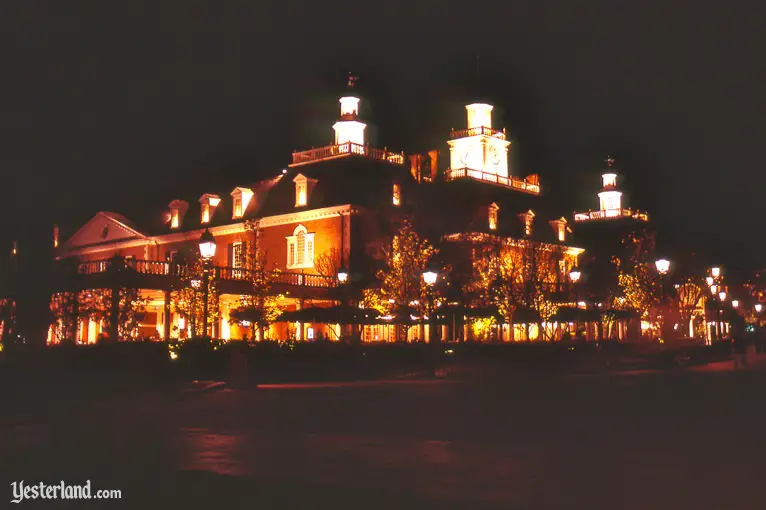
Photo by Werner Weiss and Dennis Derr, January 1983 The American Adventure |
|||
|
We’re approaching the halfway point of our stroll. In 1983, there was not yet a row of kiosks in front of The American Adventure—funnel cakes, Disney Vacation Club, coffee, beer, pins, and more. |
|||
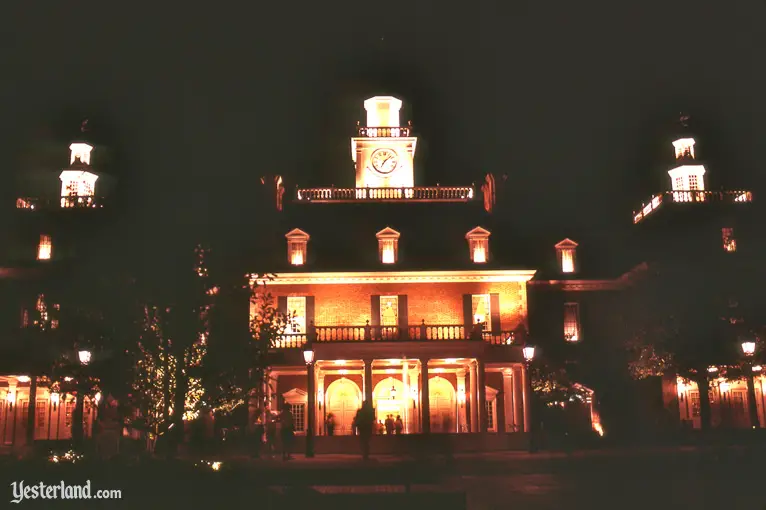
Photo by Werner Weiss and Dennis Derr, January 1983 The American Adventure |
|||
|
The huge pavilion houses the biggest show in the park. The building looked magnificent in 1983, and it still does. |
|||
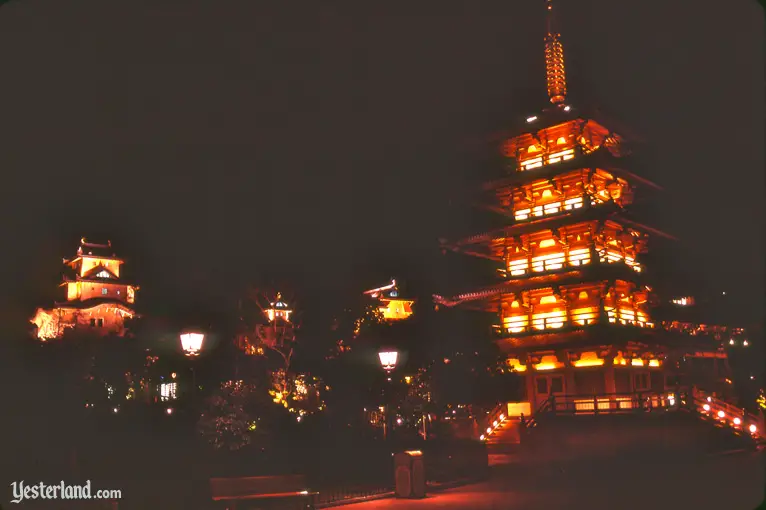
Photo by Werner Weiss and Dennis Derr, January 1983 Japan |
|||
|
Our stroll has now taken us to Japan. The pagoda looks great at night, but the star of forced perspective is at the back of the pavilion. It’s the castle which was to have been the entrance to Meet the World, a revolving-theater show about the history of Japan. (The attraction lasted almost 20 years at Tokyo Disneyland, but was never installed in Florida.) The castle is based on Shirasagi-Jō, the White Egret Castle, at Himeji, Japan. By day, it looks like what it is: a scaled-down structure. But, by night the effect is utterly convincing. It looks distant and grand—much larger than it really it. That was the case in 1983, and it’s still that way today. |
|||
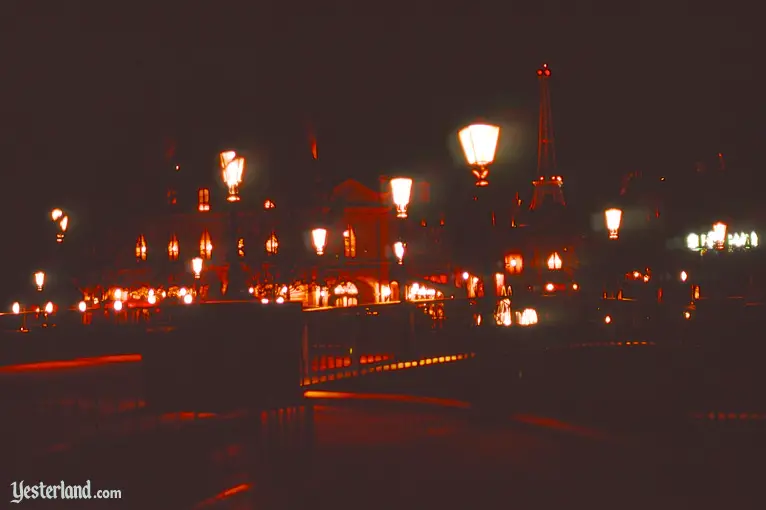
Photo by Werner Weiss and Dennis Derr, January 1983 France |
|||
|
We’ve now made it to France. Does that mean the French government funded this pavilion? No. The “participants” in 1983 were Barton & Guestier (B&G), Guye Larouche (perfume), Lanson Champagne, and The France Chefs (Paul Bocuse, Gaston Lenotre, Roger Verge, and Associate Didier Fouret). Traditional World’s Fair pavilions are sponsored by national governments. Walt Disney Productions had that in mind when work began on EPCOT Center. Disney wanted “participating nations.” Each nation would “provide the capital to cover the cost of designing, developing and constructing its attraction and/or ride and all exhibits, as well as the Pavilion itself,” according to the 1975 Disney Annual Report. That didn’t happen. When EPCOT Center opened, not a single World Showcase pavilion was backed by a government. Disney could only get some business participants, such as beverage companies and restauranteurs. Canada and Mexico had no outside participants at all. For more on this subject, take a look at Two Myths about World Showcase at Epcot. |
|||
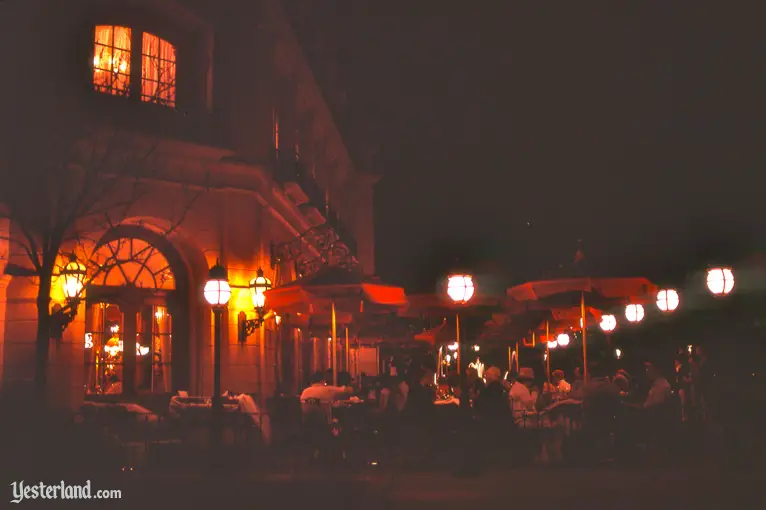
Photo by Werner Weiss and Dennis Derr, January 1983 Chefs de France sidewalk café |
|||
|
We’re now at the sidewalk café part of Chefs de France in 1983, which is an entirely an indoor restaurant today. There was no Bistro de Paris upstairs in January 1983. You would have to wait until mid-1984 for a meal in the elegant room upstairs. |
|||
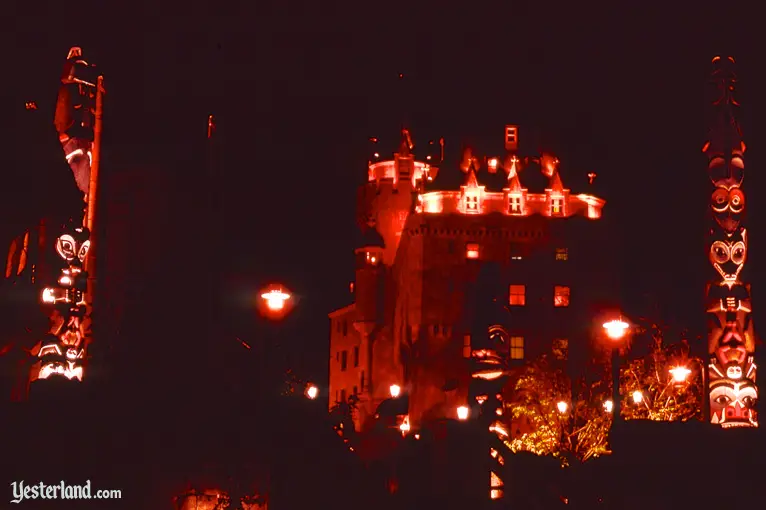
Photo by Werner Weiss and Dennis Derr, January 1983 Canada |
|||
|
Our stroll ends in Canada, home of the Circle-Vision 360 motion picture O Canada!, a shop called Northwest Mercantile, and a “buffeteria” (as Disney liked to call cafeterias) called Le Cellier. That’s right. Le Cellier—which is now a Signature Dining steakhouse and one of Walt Disney World’s hardest reservations to get—was once a place where you would grab a tray, pick food from a line, pay at a register, and find your own table. In fact, that’s how it was until 1997. Now that we’ve finished our 1983 stroll, perhaps you’d like to warm up with Le Cellier’s Cheddar Cheese Soup. Some things haven’t changed at World Showcase in 30 years. |
|||
|
|
|||
|
|
|||
|
|
|||
|
|
© 2012 Werner Weiss — Disclaimers, Copyright, and Trademarks Updated October 1, 2012. |
||